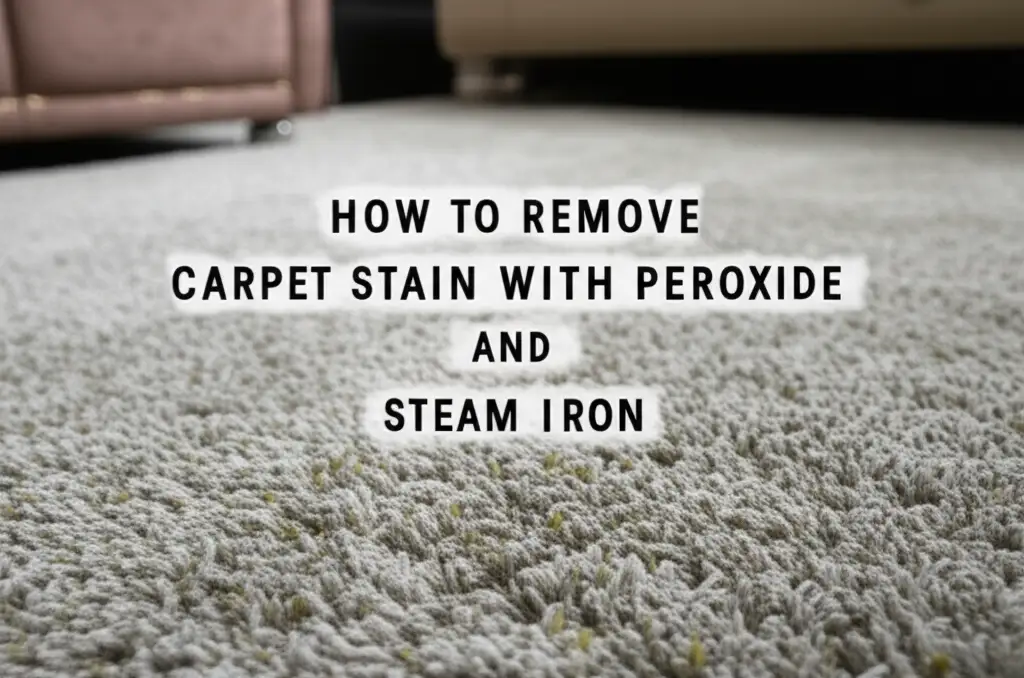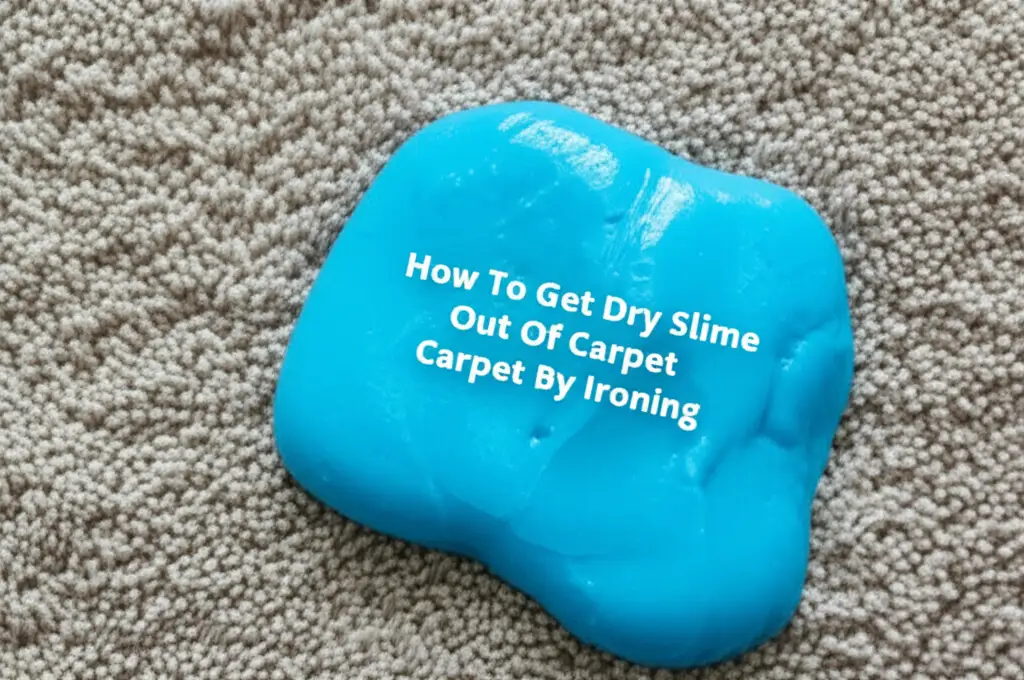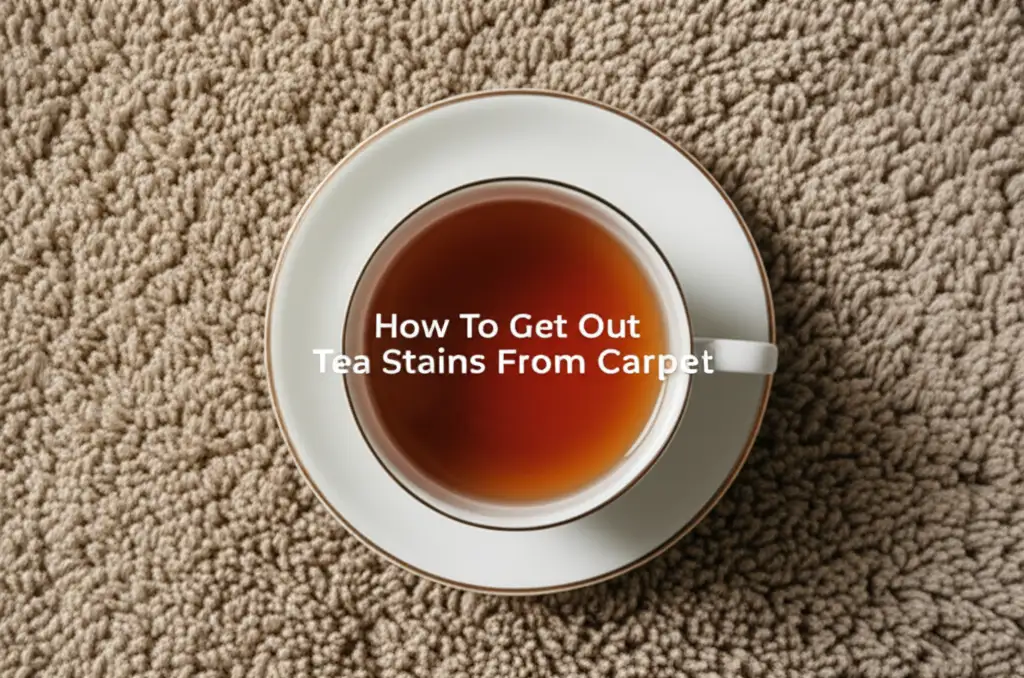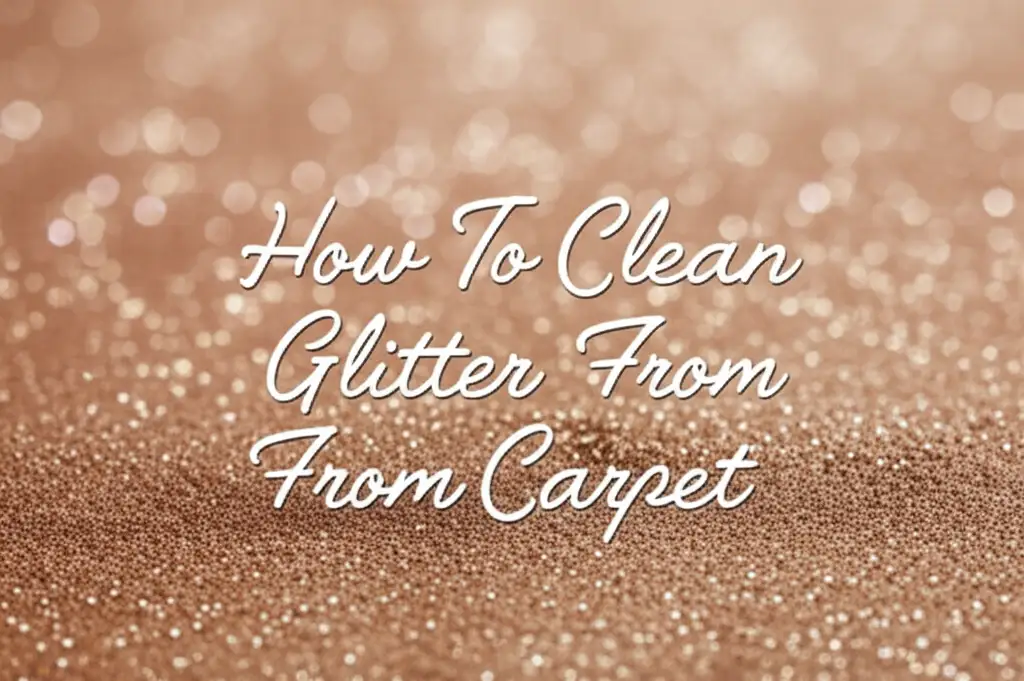· Liora Benning · Home Cleaning · 16 min read
How To Remove Carpet Stain With Peroxide And Steam Iron

Remove Carpet Stains: Peroxide & Steam Iron Method
Dealing with stubborn carpet stains can feel like a never-ending battle. Spills happen, accidents occur, and before you know it, your beautiful carpet has an unsightly mark. I know the frustration firsthand; I have tried many methods. Thankfully, a powerful combination exists in your home: hydrogen peroxide and a steam iron. This method helps tackle even the most ingrained blemishes.
This article will show you exactly how to remove carpet stain with peroxide and steam iron. We will explore the science behind this effective duo. You will learn about the necessary supplies and prepare your carpet for treatment. We will also provide a clear, step-by-step guide for successful stain removal. Get ready to revitalize your carpet and make it look new again.
Takeaway
- Hydrogen peroxide breaks down stain molecules.
- A steam iron lifts the stain residue using heat and moisture.
- Always test the solution on an hidden area first.
- Blot, do not rub, the stain.
- Repeat the process for tough or old stains.
Main Query Answer
You can effectively remove carpet stains by applying a diluted hydrogen peroxide solution to the affected area. Then, place a clean cloth over the stain and apply gentle heat with a steam iron. This method activates the peroxide, lifts the stain from the fibers, and helps transfer it onto the cloth.
Understanding the Power Duo: Peroxide and Steam Iron for Carpet Stains
Understanding why hydrogen peroxide and a steam iron work together is the first step. This combination offers a potent approach to carpet stain removal. Hydrogen peroxide acts as a bleaching agent. It breaks down the molecular structure of many common stains. This action helps to lighten or eliminate the stain itself. It works particularly well on organic stains like coffee, wine, or pet accidents.
The steam iron plays a different, yet crucial, role. Heat from the iron helps open up the carpet fibers. This allows the peroxide solution to penetrate deeper into the stain. The steam then creates a lifting action. It draws the broken-down stain particles from the carpet. These particles transfer onto a clean cloth placed between the iron and the carpet. This dual action makes tough stains disappear. I found this method to be incredibly effective on various stubborn marks.
How Hydrogen Peroxide Works
Hydrogen peroxide (H2O2) is a simple chemical compound. It contains oxygen. When it meets organic matter, it releases oxygen bubbles. These bubbles help to loosen and break down the stain molecules. This process is called oxidation. It causes the stain to become colorless. Peroxide is a mild bleaching agent. It generally does not harm colorfast carpets when used correctly. Always use 3% hydrogen peroxide for safety. Higher concentrations can damage carpet fibers.
The Role of Steam in Lifting Stains
Steam provides heat and moisture. This combination is ideal for stain extraction. The heat from the iron makes the stain more fluid. It also helps to separate the stain from the carpet fibers. The moisture in the steam helps to dissolve and loosen the stain particles. When you apply pressure with the iron, the steam forces the stain particles upwards. These particles then stick to the absorbent cloth. This method is surprisingly effective for deeply set stains. It pulls them right out of the carpet.
Essential Supplies for Effective Stain Removal
Before you begin to remove carpet stain with peroxide and steam iron, gather all your supplies. Having everything ready makes the process smoother and more efficient. You do not want to stop mid-treatment. This preparation helps ensure you tackle the stain quickly. Quick action often improves your chances of complete removal. I always lay out my tools first.
Gathering the right items prevents interruptions. You avoid scrambling for something important while the stain sets further. Make sure each item is clean and ready for use. This includes your steam iron. A clean iron performs better. If your iron needs a clean, consider how to clean an iron on the inside to ensure optimal performance. This simple step can prevent unwanted residue transfer to your carpet.
What You Will Need
Having these items on hand ensures you are prepared for the task. Each item plays a specific role in the stain removal process. Do not skip any of these.
- Hydrogen Peroxide (3% solution): This is the most common strength. It is safe for most carpets. Do not use stronger concentrations.
- Spray Bottle: For even application of the peroxide. A fine mist is best.
- Steam Iron: Any standard steam iron will work. Make sure it has a steam setting.
- Clean, White Cloths or Towels: You will need several. White cloths prevent color transfer to your carpet. They also show the stain lifting.
- Small Bucket or Bowl: For diluting peroxide if needed, or holding water.
- Gloves: Protect your hands from the peroxide.
- Vacuum Cleaner: For pre-cleaning and post-cleaning.
- Paper Towels or Absorbent Cloths: For blotting up excess liquid.
- Stiff Brush (optional): For gently working the solution into tough stains.
- Fan (optional): To help dry the area faster.
Step-by-Step Guide: Removing Carpet Stains with Peroxide and Steam Iron
Now comes the practical part: the detailed steps to remove carpet stain with peroxide and steam iron. Following these instructions carefully will give you the best results. Patience is key. Do not rush any step. I find taking my time makes a big difference.
Remember, every stain is different. Some might need multiple treatments. Do not get discouraged if the first attempt does not fully remove it. This method is effective for a wide range of stains, from recent spills to older, set-in marks. For very specific, tough stains, like those left by a blackberry, dedicated techniques can also be highly effective. Learn more about how to get a blackberry stain out of the carpet for a specific approach.
1. Prepare the Area
First, make sure the stain is ready for treatment. Use your vacuum cleaner. Vacuum the stained area thoroughly. This removes any loose dirt or debris. Loose particles can make the stain worse when wet. Blot fresh stains immediately. Use a clean, dry cloth. Work from the outside of the stain inwards. This prevents spreading.
2. Test the Peroxide Solution
Safety first. Before applying peroxide to the visible stain, always perform a patch test. Find an inconspicuous area of your carpet. This could be inside a closet or under a piece of furniture. Apply a small amount of 3% hydrogen peroxide to this spot. Wait 5-10 minutes. Check for any discoloration or damage. If the carpet color remains stable, you can proceed. If not, do not use peroxide on your carpet.
3. Apply the Peroxide
Put on your gloves. Pour the 3% hydrogen peroxide into a spray bottle. Lightly mist the stained area. Do not oversaturate the carpet. You want the carpet fibers damp, not soaking wet. For very stubborn stains, you can pour a small amount directly onto the stain. Then, gently work it into the fibers with a stiff brush. Let the peroxide sit for 5-10 minutes. It needs time to react with the stain.
4. Prepare the Iron and Cloth
While the peroxide works, prepare your steam iron. Fill the iron with distilled water. Set it to a medium to high heat setting. Ensure the steam function is active. Place a clean, white cloth directly over the stained area. The cloth should fully cover the stain. Make sure the cloth is absorbent. I usually fold a towel for this purpose.
5. Iron the Stain Away
Now, gently press the hot steam iron onto the white cloth. Hold it for about 10-15 seconds. Do not move the iron back and forth like you iron clothes. Just apply firm, even pressure. The heat and steam will penetrate the cloth. They will activate the peroxide further. The stain will begin to transfer onto the white cloth. Lift the iron and check the cloth. You should see the stain transferring.
6. Repeat and Rinse
Move the white cloth to a clean section. Repeat the ironing process. Continue pressing the iron onto fresh areas of the cloth. Do this until no more stain transfers onto the cloth. This might take several repetitions. For deeply set stains, reapply peroxide lightly. Then repeat the ironing steps. Once the stain is gone, blot the area with a clean, damp cloth. This removes any peroxide residue. You are essentially rinsing the spot.
7. Dry the Carpet
Finally, allow the treated area to dry completely. You can use paper towels or a dry absorbent cloth to blot excess moisture. Place a fan nearby to speed up drying time. Avoid walking on the damp area. Once dry, vacuum the carpet again. This restores the carpet pile. Your carpet should now be stain-free.
Troubleshooting Common Carpet Stain Removal Issues
Even with the best instructions, you might encounter some challenges. Sometimes, stains are particularly stubborn. Other times, the carpet might not respond as expected. Do not worry; there are common solutions. Knowing how to troubleshoot helps you handle unexpected problems. I always prepare for a challenge when tackling tough stains.
This section covers common issues. We will offer practical advice. These tips help you achieve the best possible outcome. For instance, sometimes a stain seems to disappear but then reappears. This is called wicking. It means the stain residue soaked into the carpet backing. It then wicked up as the carpet dried. We will discuss how to prevent this. Another common issue is dealing with very old or dried-in stains. They often need more persistence.
Stubborn Stains Persist
If a stain remains after the first attempt, repeat the process. Apply more peroxide. Let it sit longer. Then, re-iron with a fresh clean cloth. You might need to do this several times. For extremely tough or old stains, consider a slightly longer peroxide dwell time, up to 30 minutes, but check for color changes. Some stains, like old tar, might require a different approach first. For advice on these incredibly tricky substances, read about how to remove tar-like substance from carpet. Combining methods can yield better results.
Carpet Discoloration or Bleaching
Even with a patch test, a slight lightening can occur. This is rare with 3% peroxide on colorfast carpets. If you notice any lightening, stop immediately. Blot the area thoroughly with plain water. You can try a less aggressive method next time. Or dilute the peroxide even further (1 part peroxide to 1 part water). This reduces its strength.
Stain Wicking Back Up
If the stain reappears as the carpet dries, it is likely wicking from the padding below. To fix this, dampen the area again with a very light mist of peroxide. Place several layers of clean, dry white towels over the stain. Then, place a heavy object (like a stack of books) on top of the towels. Leave it overnight. The towels will absorb the moisture and the wicking stain. This draws the stain out instead of letting it dry back into the fibers.
Carpet Fibers Feel Stiff
After cleaning, carpet fibers can sometimes feel a bit stiff. This usually means there is some residue left. Lightly mist the area with plain water. Blot with a clean towel. Then, gently brush the carpet fibers with your fingers or a soft-bristled brush. This helps to fluff the pile. Vacuuming once dry also helps restore softness.
Maintaining Your Carpet’s Cleanliness: Beyond Stain Removal
Removing a stain is a victory. But maintaining a clean carpet prevents future headaches. Regular care is simpler than reactive cleaning. A well-maintained carpet also lasts longer. It contributes to a healthier home environment. I always encourage proactive cleaning habits.
Prevention is often the best approach. Knowing common sources of stains helps. Acting quickly on spills is crucial. This section provides tips for ongoing carpet care. These practices complement your stain removal efforts. They help keep your carpet looking its best every day. Keeping carpets clean is a continuous effort. It pays off in the long run.
Regular Vacuuming Habits
Vacuum your carpet regularly. This is the most basic and effective way to maintain cleanliness. Vacuuming removes loose dirt and dust. These particles can wear down carpet fibers. They also become harder to remove over time. High-traffic areas need more frequent vacuuming. Aim for at least once or twice a week.
Quick Spill Response
Time is critical when spills happen. Blot spills immediately. Use a clean, white cloth. Do not rub the stain. Rubbing pushes the stain deeper into the fibers. It can also spread the stain. Always blot from the outside in. This confines the spill. For common organic spills, a quick blot can save you from a major cleaning job. Accidents like pet vomit require fast action too. Knowing how to remove cat vomit from carpet immediately can save your floor.
Using Entry Mats and Rugs
Place entry mats at all doorways. These mats trap dirt and moisture from shoes. This prevents much of the outside grime from reaching your carpet. Area rugs in high-traffic zones also protect your carpet. They absorb wear and tear. You can clean these rugs easily. This saves your main carpet from damage.
Professional Cleaning Schedule
Even with regular home care, professional cleaning is beneficial. Schedule a professional carpet cleaning every 12-18 months. Professionals have powerful equipment and specialized solutions. They can deep clean your carpet. This removes deeply embedded dirt and allergens. Professional cleaning extends your carpet’s lifespan. It also keeps your home healthier.
When to Seek Professional Carpet Cleaning Services
While the peroxide and steam iron method is powerful, some situations demand expert help. Not every stain or carpet issue can be resolved with DIY methods. Knowing when to call a professional saves you time, effort, and potential damage to your carpet. I learned this lesson after trying to tackle everything myself.
Professional carpet cleaners have advanced equipment and specialized knowledge. They can handle a wider range of stains and carpet types. They also know how to assess carpet conditions. This section helps you identify those specific scenarios. It ensures you make the right decision for your carpet’s health. You want to protect your investment in your home.
Large or Widespread Stains
A small spot is manageable. However, if a large area of your carpet is stained, DIY cleaning can be overwhelming. Treating large areas with a steam iron is time-consuming. It may not provide an even result. Professionals use large-scale extractors. These machines clean much faster and more uniformly. They achieve a consistent clean across wide sections.
Persistent or Very Old Stains
Some stains have set for years. They might have permeated deep into the carpet padding. While peroxide and steam can help, they may not fully remove these deeply embedded stains. Professionals have stronger solutions and more powerful equipment. They can often lift stains that household methods cannot touch. This includes very old pet stains which might leave lasting odors if not treated completely. For persistent odors, specific treatments are needed. Learning how to remove pet pee smell from carpet can guide you in these instances.
Delicate or Specialty Carpets
Not all carpets are equal. Some materials like wool, silk, or antique carpets require special care. Harsh chemicals or high heat can damage these delicate fibers. Hydrogen peroxide might not be suitable for all carpet dyes. Professionals can identify carpet types. They use cleaning methods specific to each material. This prevents damage and ensures proper cleaning.
Water Damage or Mold Issues
If your carpet has significant water damage, or if you suspect mold growth, call professionals immediately. DIY methods are not enough to address these serious issues. Water damage requires specialized drying equipment to prevent mold. Mold can cause health problems and needs professional remediation. Trying to clean these issues yourself can worsen the problem.
General Carpet Discoloration or Fading
Over time, carpets can look dull or discolored. This might be due to general wear, sun exposure, or accumulated dirt. This is not a single stain but a widespread issue. Peroxide and steam iron target specific spots. They cannot restore overall carpet color or vibrancy. Professional carpet cleaning can often refresh the entire carpet. They use methods that deep clean and brighten the fibers.
Frequently Asked Questions About Peroxide and Steam Iron Carpet Stain Removal
Is hydrogen peroxide safe for all carpet colors?
Hydrogen peroxide (3%) is generally safe for most colorfast carpets. However, always perform a patch test first. Apply a small amount to an hidden area. Wait 5-10 minutes. Check for any discoloration or bleaching. This simple step prevents damage.
Can I use this method on old, dried-in stains?
Yes, this method is effective on old, dried-in stains. The peroxide breaks down the stain molecules. The steam helps lift them. You may need to repeat the process several times. Patience is key for older stains.
What kind of cloth should I use with the iron?
Use a clean, white, absorbent cloth or towel. White cloth prevents color transfer to your carpet. It also allows you to see the stain transferring from the carpet. Choose a cloth that can withstand heat.
How hot should the steam iron be?
Set your steam iron to a medium to high heat setting. Ensure the steam function is active. The heat should be enough to generate good steam. Avoid the highest setting if your carpet is delicate.
Will this method remove pet stains and odors?
The peroxide and steam iron method can remove the visual stain from pet accidents. Peroxide also helps neutralize odors. For deep-set pet odors, specialized enzyme cleaners may be necessary. They break down odor-causing molecules.
Can I use a steam mop instead of a steam iron?
A steam mop applies broader heat and moisture. It works differently than a focused steam iron. While steam mops can clean carpets, they are not ideal for targeted stain removal using this specific peroxide method. A steam iron provides focused heat and pressure on a small area. For more information on steam mops, read about does steam mop work on carpet.
Conclusion
You now have a powerful method to remove carpet stain with peroxide and steam iron. This combination offers an effective solution for many common household spills. Hydrogen peroxide breaks down the stain. The steam iron then lifts the broken-down residue. Remember to always test an inconspicuous area first. This ensures no damage occurs to your carpet.
Applying these steps carefully can save your carpet. It restores its beauty without the need for harsh chemicals. I encourage you to try this method next time a stubborn stain appears. A clean carpet makes your home feel fresh and inviting. Embrace the power of this simple, yet effective, cleaning duo. Your carpets will thank you.





